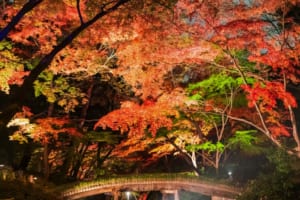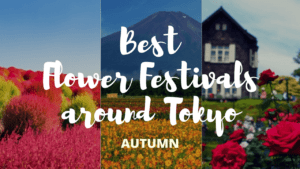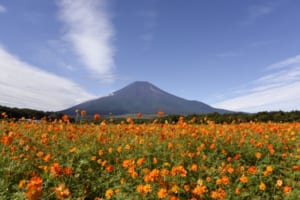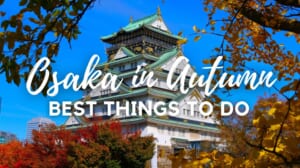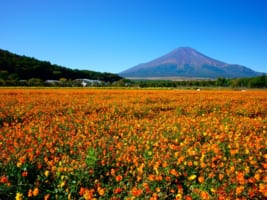10 Best Things to Do in Kyoto in Autumn
Kyoto's Fall Palette: More Than Just colorful Leaves
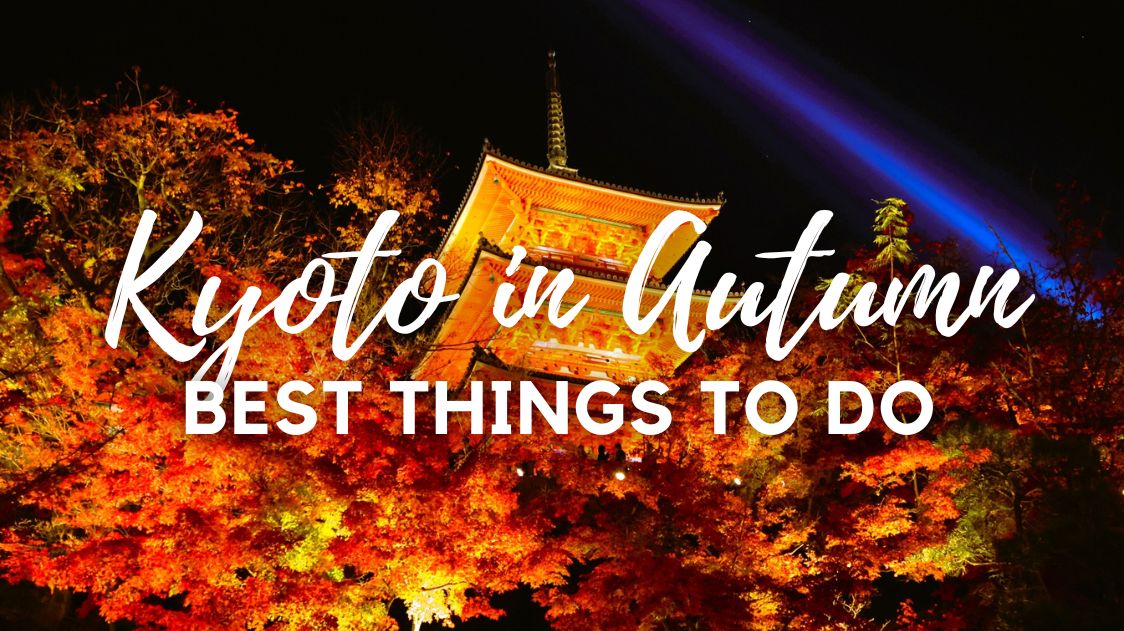
In a country where autumn is a nationwide spectacle, Kyoto offers its own unique spin on the season. The city, displaying an interesting mix of ancient temples and modern cafes, provides a rich backdrop for fall activities that are both traditional and contemporary. You’ll find everything from Zen gardens showcasing the subtle hues of fall to moon-viewing events that celebrate the season’s poetic beauty.
If you’re compiling a list of the best things to do in Kyoto in Autumn, prepare for a season that seamlessly melds the fleeting beauty of nature with the enduring charm of cultural heritage.
1. Capture the Twilight Magic at Fushimi Inari Shrine
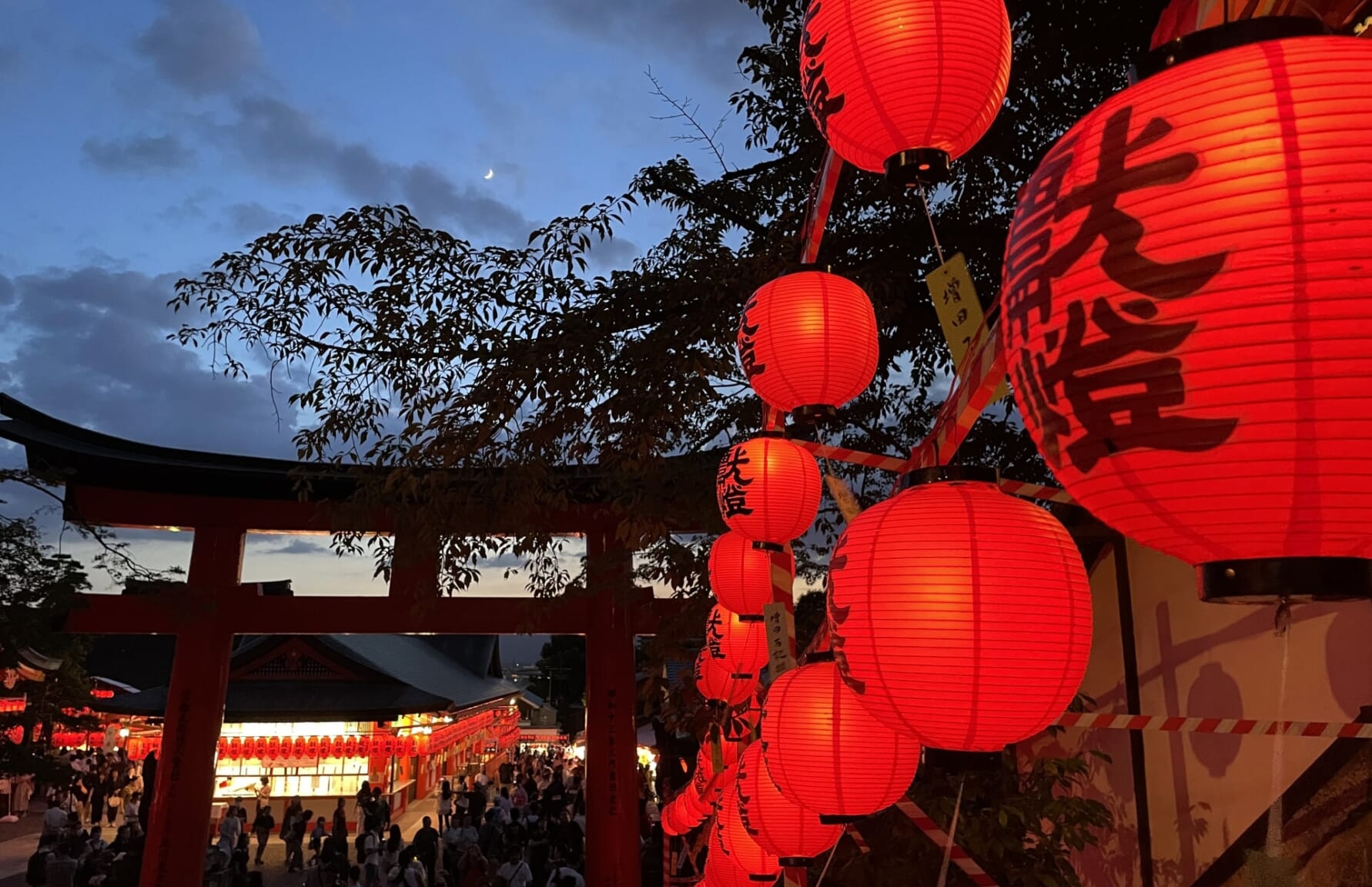 Fushimi Inari Shrine (伏見稲荷大社) is a place of spiritual significance, but when visited at dusk during the autumn season, it transforms into a realm of ethereal beauty. The shrine is famous for its thousands of vermilion torii gates that create a winding path up the sacred Mount Inari.
Fushimi Inari Shrine (伏見稲荷大社) is a place of spiritual significance, but when visited at dusk during the autumn season, it transforms into a realm of ethereal beauty. The shrine is famous for its thousands of vermilion torii gates that create a winding path up the sacred Mount Inari.
As the sun sets, the vibrant colors of the gates seem to glow, creating a striking contrast with the autumn leaves that are equally vivid but in a more subdued, natural palette. The descending darkness adds a layer of mystique, making the experience feel like a walk through an enchanted forest.
The shrine is less crowded at this time, allowing for a more peaceful exploration. The fading light, the colors of the gates, and the autumn leaves come together in a harmonious blend that feels almost orchestrated, as if nature and spirituality are in perfect sync.
More info: Fushimi Inari Taisha: Kyoto’s Most Visited Shrine
2. Wander Through Time at Arashiyama Bamboo Grove and Tenryu-ji Temple
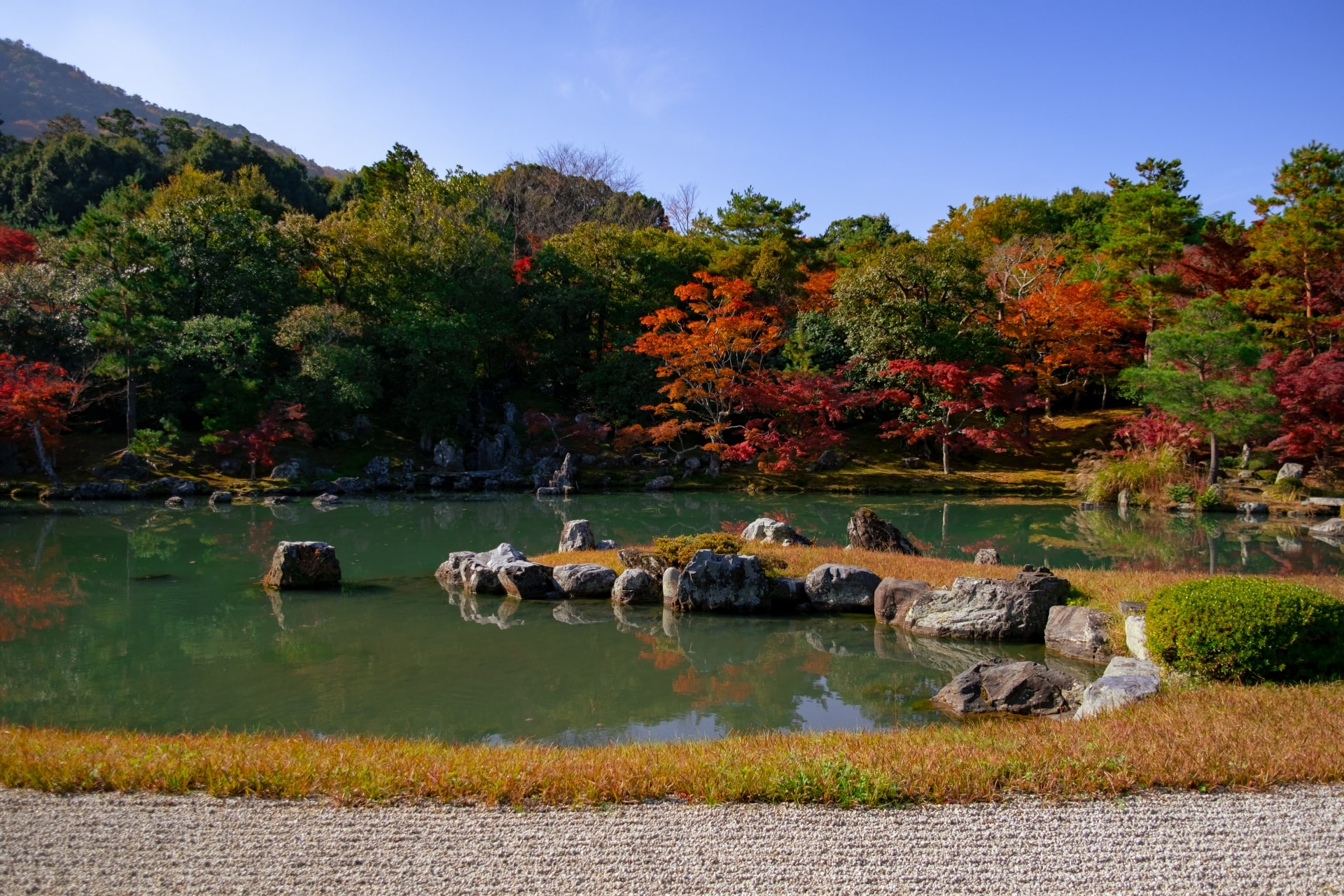
Arashiyama is renowned for its Bamboo Grove (嵐山 竹林), a towering green sanctuary that feels like something out of a fairy tale. In autumn, however, the experienc e is elevated. The bamboo remains a constant, stoic green, but it’s complemented by the changing colors of the surrounding foliage.
This is particularly charming in the adjacent Tenryuji Temple (天龍寺). This Zen temple has a garden designed by the famous Zen master Muso Soseki, and it’s a masterpiece in any season. But in autumn, the meticulously arranged rocks, ponds, and moss seem to pay homage to the vibrant reds and oranges that adorn the temple’s maple trees.
The contrast between the evergreen bamboo and the ephemeral autumn leaves serves as a beautiful metaphor for the transient nature of life, a concept deeply ingrained in Zen philosophy.
More info: Kyoto Arashiyama Bamboo Grove & Tenryuji Temple: Kyoto’s Yet Another UNESCO World Heritage Site
3. Illuminate Your Evening at Kiyomizudera and Toji Temples
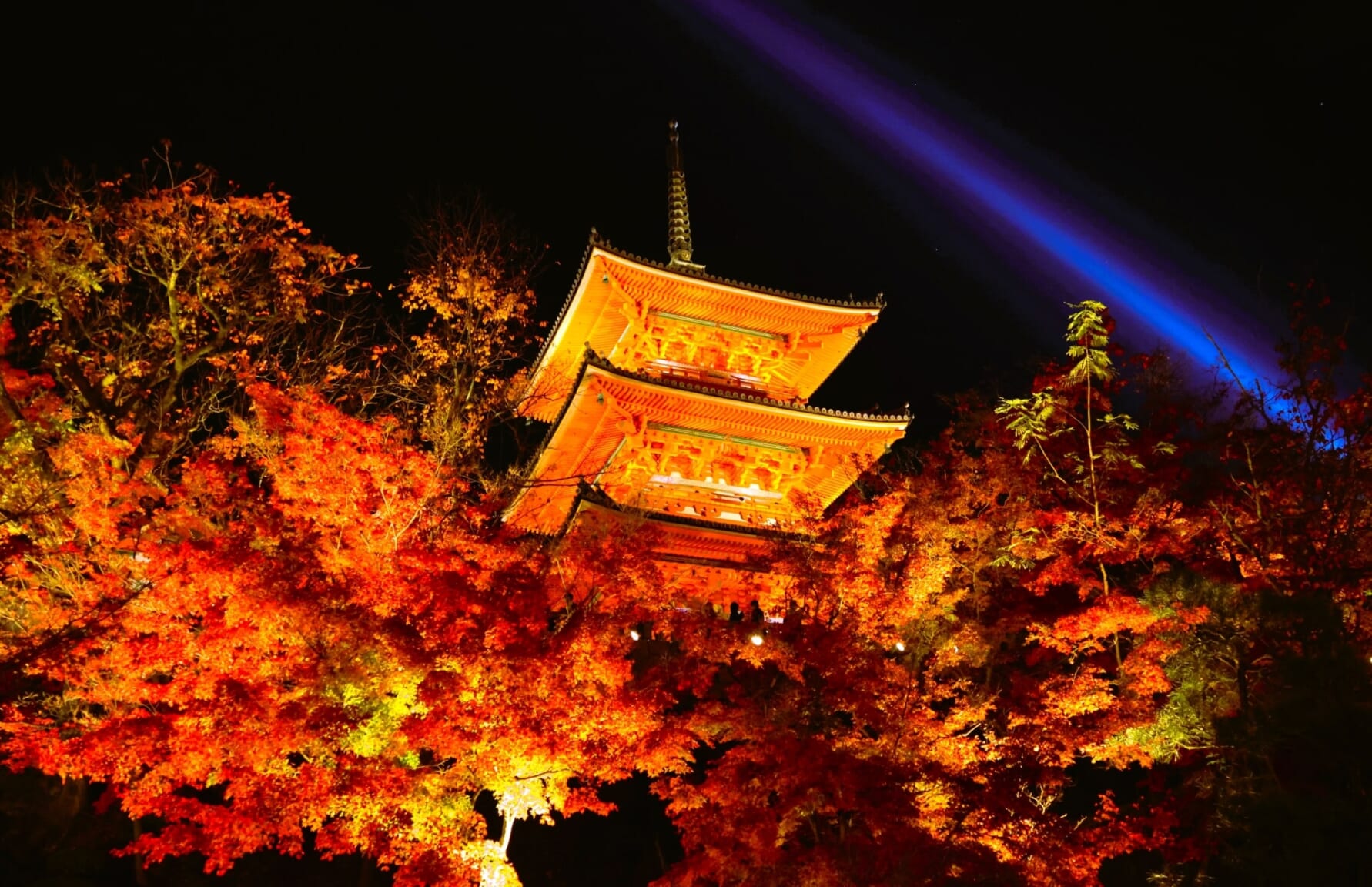
Kyoto’s temples are a sight to behold at any time of year, but they take on a special aura during the autumn night illuminations. Kiyomizudera (清水寺), perched on a hill overlooking the city, offers a panoramic view that becomes a sea of autumn colors under the evening sky. The temple’s wooden terrace is lit up from the 18th to the 30th of November, casting a warm glow that makes the colors of the leaves seem even more intense.
Similarly, Toji Temple (東寺) offers its own version of autumnal night magic. Known for its five-story pagoda, Toji is surrounded by gardens that are illuminated at night. The lights are strategically placed to highlight the autumn leaves, making them appear as if they are floating in the dark sky.
Both temples offer a unique way to experience Kyoto’s autumn—bringing together the best of natural beauty, architectural grandeur, and spirituality, all under the cover of night.
More info about Kiyomizudera: Kyoto Kiyomizudera Temple: When is the Best Time to Visit?
4. Ignite Your Wishes at Tanukidanisan Fudoin Temple Fall Festival
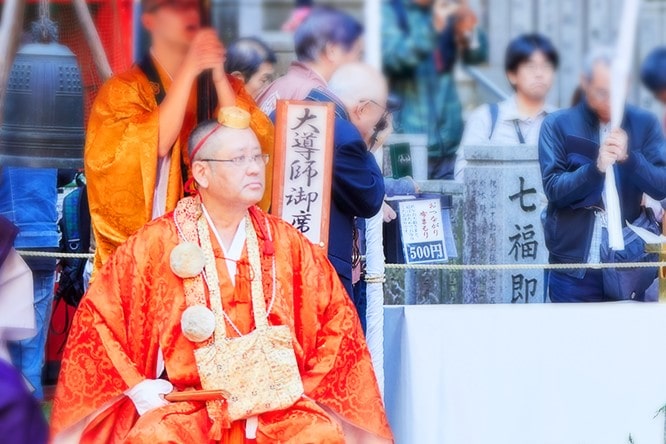
The Tanukidanisan Fudoin Temple (狸⾕⼭不動院) is a hidden gem that comes alive during its Fall Festival on November 3rd. This isn’t your typical touristy festival; it’s a deeply spiritual event that has been celebrated for centuries. Monks in traditional robes perform rituals and chant sutras, creating an atmosphere of solemnity that’s palpable even if you don’t understand the words.
The highlight of the festival is the sacred bonfire into which wooden tablets inscribed with wishes are thrown. As the fire crackles and the smoke rises, it’s believed that the wishes ascend to the heavens. The backdrop of autumn leaves in fiery reds and oranges adds a dramatic touch, making the ritual not just a spiritual experience but also a visual spectacle.
This festival is a rare opportunity to witness religious practices that are often overshadowed by Kyoto’s more famous tourist attractions.
5. Reflect on Beauty Along the Philosopher’s Path
 The Philosopher’s Path (哲学の道) in Kyoto is a stone walkway that follows a canal lined with cherry trees. While the path is famous for its spring cherry blossoms, the fall offers its own brand of magic. The cherry trees transform, their leaves turning shades of red and orange that seem almost surreal in their intensity. The path is named after Nishida Kitaro, a famous Japanese philosopher who is said to have walked this route daily for meditation.
The Philosopher’s Path (哲学の道) in Kyoto is a stone walkway that follows a canal lined with cherry trees. While the path is famous for its spring cherry blossoms, the fall offers its own brand of magic. The cherry trees transform, their leaves turning shades of red and orange that seem almost surreal in their intensity. The path is named after Nishida Kitaro, a famous Japanese philosopher who is said to have walked this route daily for meditation.
As you stroll along the path, it’s easy to see why it would inspire contemplation. The colors of the leaves reflect in the water of the canal, creating a double vision of autumnal beauty. It’s a place that invites you to slow down, to ponder, and to be in the moment, surrounded by the ephemeral beauty of nature in transition.
6. Chase Fall Colors at Kyoto’s Best Spots
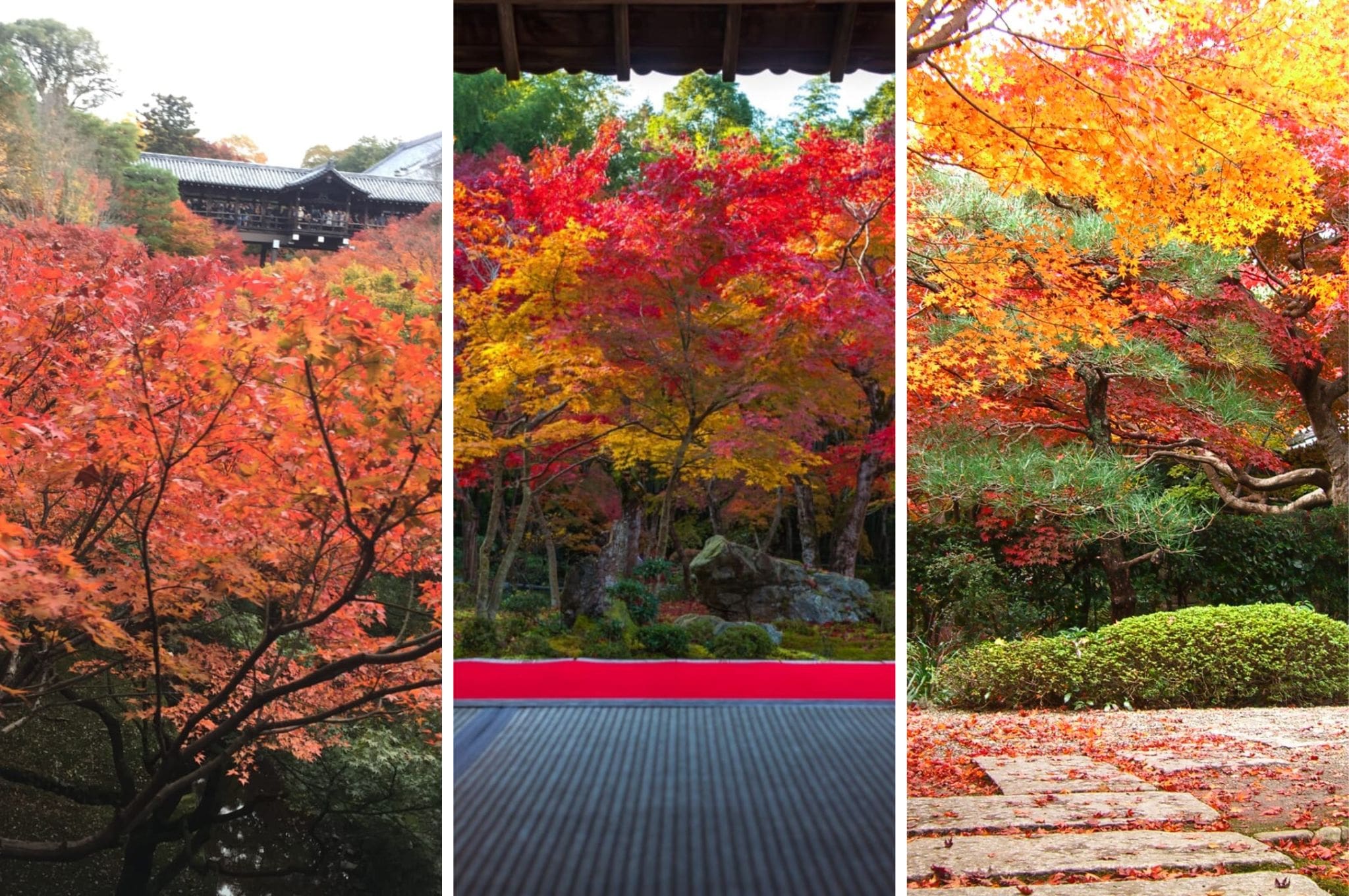 While the city is home to countless temples and shrines, each with its own unique appeal, there are certain spots that truly shine when the leaves begin to change. Tofukuji Temple (東福寺), for instance, offers a panoramic view of autumn hues from its Tsutenkyo Bridge. Enkoji Temple (圓光寺), a less frequented destination, boasts stunning Japanese gardens that come alive with color in the fall.
While the city is home to countless temples and shrines, each with its own unique appeal, there are certain spots that truly shine when the leaves begin to change. Tofukuji Temple (東福寺), for instance, offers a panoramic view of autumn hues from its Tsutenkyo Bridge. Enkoji Temple (圓光寺), a less frequented destination, boasts stunning Japanese gardens that come alive with color in the fall.
Then there’s Enrian Temple (厭離庵), known for its leaves that turn a burning red, so vivid it’s almost surreal. These are just a few examples; the city is dotted with locales that offer breathtaking views, each spot offering a different hue, a different mood, and a different way to experience Kyoto’s autumnal beauty.
See also: 10 Best Autumn Leaves Spots in Kyoto
7. Witness Gold and Foliage in Harmony at Kinkakuji
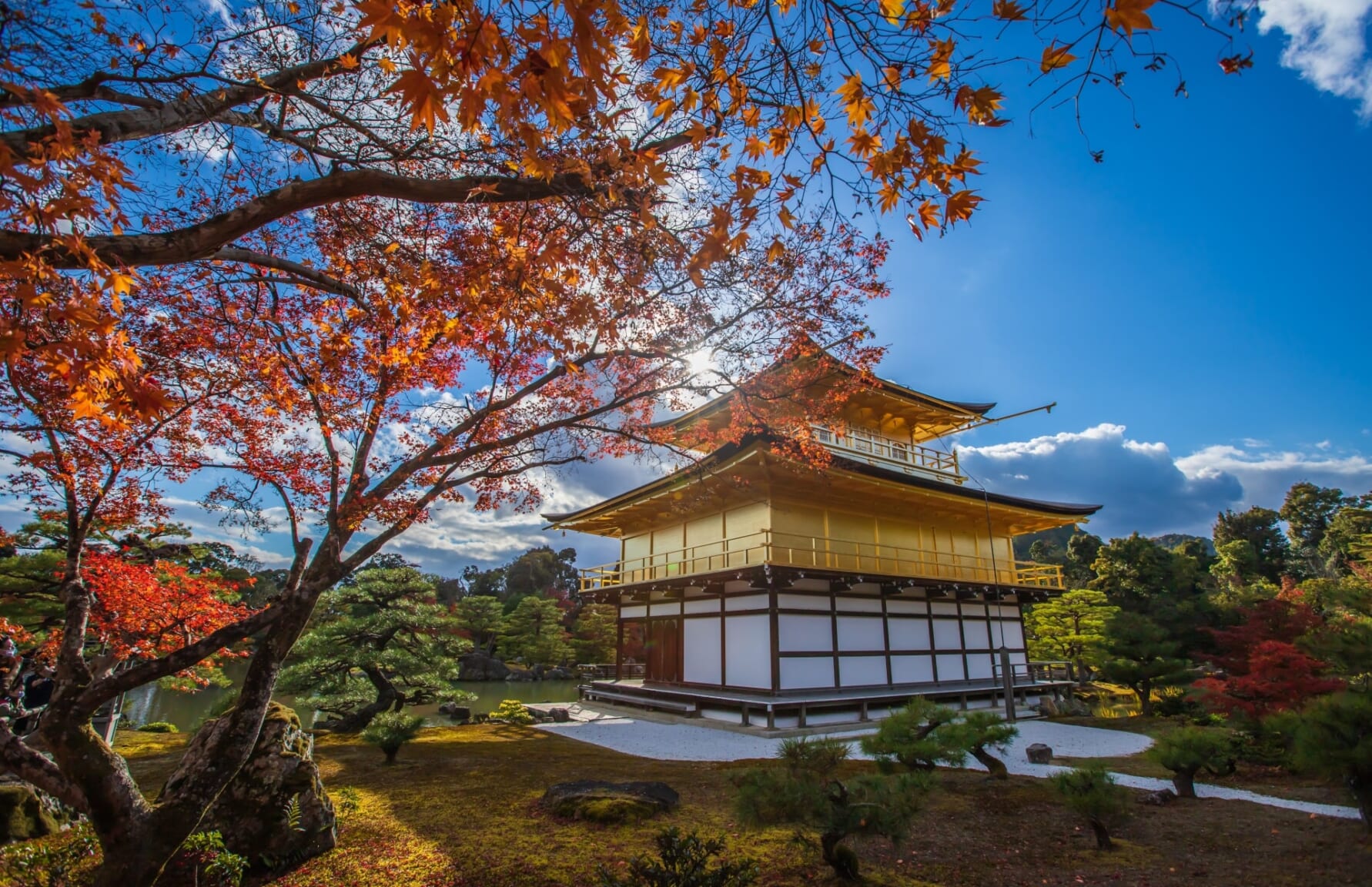 Kinkakuji (金閣寺), or the Golden Pavilion, is one of Kyoto’s most iconic landmarks. Its top two floors are covered in gold leaf, creating a shimmering spectacle that’s awe-inspiring at any time of year. However, in the autumn, the pavilion takes on a new level of grandeur. The surrounding pond reflects not just the golden structure but also the vivid reds, oranges, and yellows of the autumn leaves.
Kinkakuji (金閣寺), or the Golden Pavilion, is one of Kyoto’s most iconic landmarks. Its top two floors are covered in gold leaf, creating a shimmering spectacle that’s awe-inspiring at any time of year. However, in the autumn, the pavilion takes on a new level of grandeur. The surrounding pond reflects not just the golden structure but also the vivid reds, oranges, and yellows of the autumn leaves.
The effect is like stepping into a living painting where every element is perfectly balanced. The gold of the pavilion seems to amplify the colors of the leaves, while the leaves, in turn, make the gold appear even more radiant. It’s an interesting interplay of man-made and natural beauty, each enhancing the other in a way that’s almost poetic.
More info: Kinkakuji Temple: Kyoto’s Golden Pavilion
8. Sail Through Autumn’s Palette on the Hozugawa River
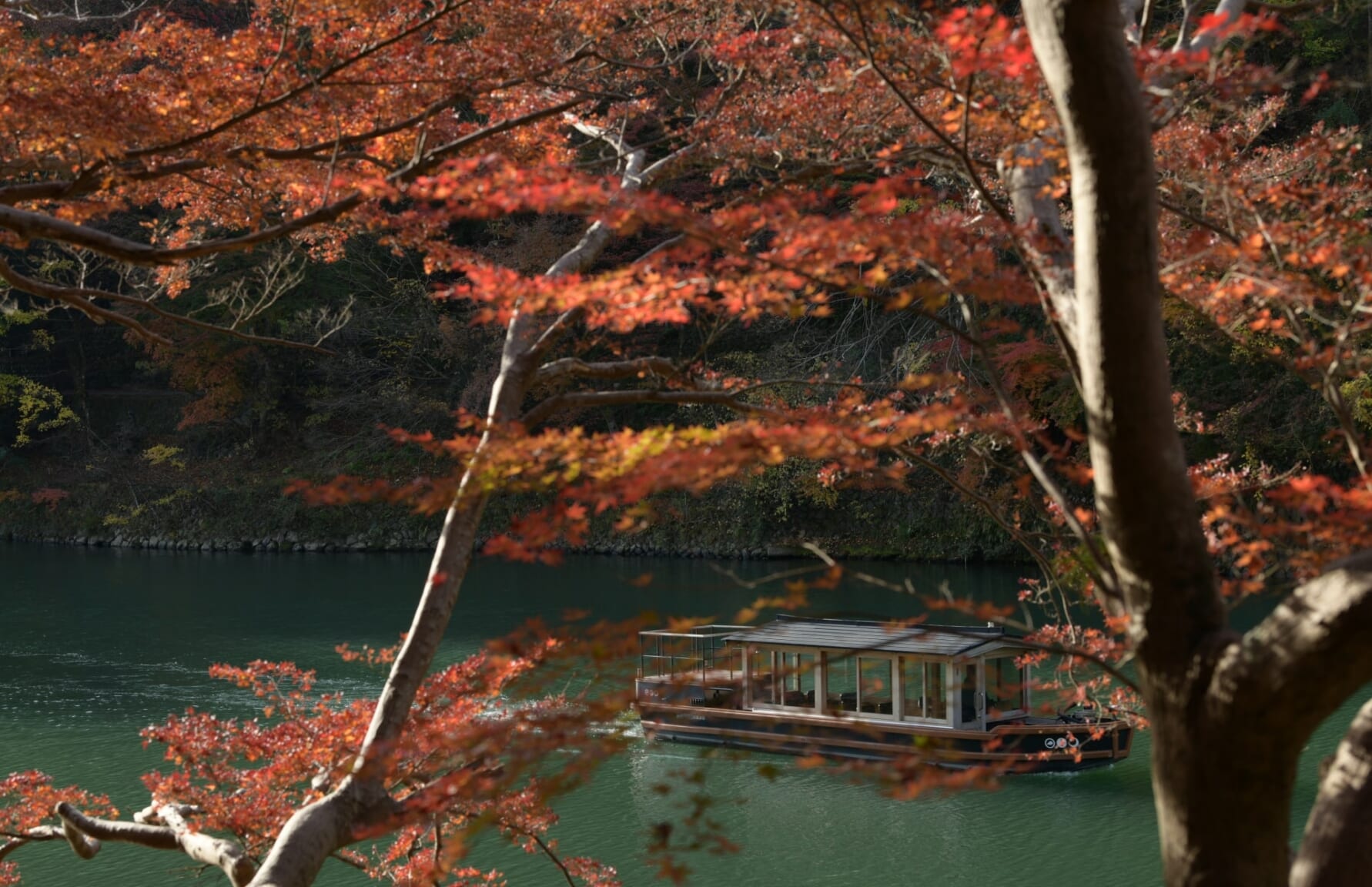 The Hozugawa River Cruise (保津川下り) offers a unique vantage point for appreciating Kyoto’s autumn colors. A boat ride on this river is like a journey through a corridor of seasonal splendor. The banks are lined with a variety of trees—maples, pines, and even some late-blooming cherry trees—that create a kaleidoscope of colors.
The Hozugawa River Cruise (保津川下り) offers a unique vantage point for appreciating Kyoto’s autumn colors. A boat ride on this river is like a journey through a corridor of seasonal splendor. The banks are lined with a variety of trees—maples, pines, and even some late-blooming cherry trees—that create a kaleidoscope of colors.
The boatmen, who skillfully navigate the river’s twists and turns, often share stories and legends about the area, adding a layer of cultural richness to the natural beauty. The ride is both tranquil and exhilarating, with moments of calm water suddenly giving way to minor rapids. It’s an adventure that engages all your senses, from the visual feast of the foliage to the sound of the river and the crisp autumn air.
9. Savor the Season at Umeshu Festa in Kitano Tenmangu Shrine
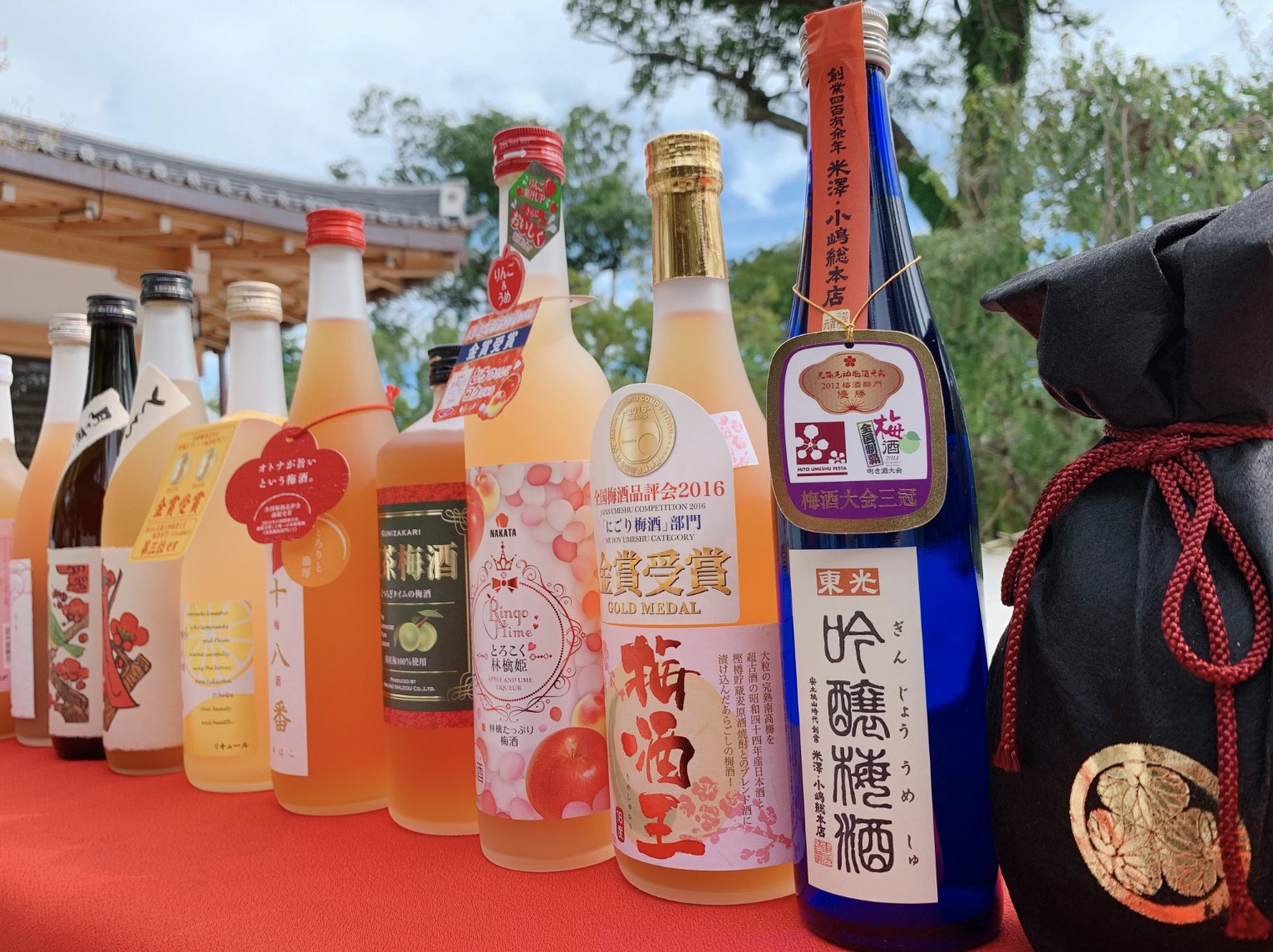
While Kyoto’s temples and natural scenery get most of the attention, the city’s culinary scene also has its own seasonal celebrations. One such event is the Umeshu Festa (梅酒まつり), a plum wine festival held at Kitano Tenmangu Shrine (北野天満宮神社) for three or four days in November (2023 schedule pending to be confirmed at the time of writing this article).
This festival is a paradise for foodies and wine enthusiasts alike. Vendors from across the country come to showcase their best umeshu (plum wine), offering tastings and bottles for purchase. The festival is set against the backdrop of the shrine and its early autumn foliage, making it a feast for the eyes as well as the palate.
What sets this festival apart is its focus on a specific seasonal ingredient—plum—which is celebrated in a way that’s both traditional and innovative, much like Kyoto itself.
▶ Umeshu Festa official website: https://umeshu-matsuri.jp/kyoto/
Information
 Access Access |
7-min walk from Kitano Hakubai-Cho Station |
|---|---|
 Official Website Official Website |
https://kitanotenmangu.or.jp/ |
10. Dance Under the Harvest Moon at Meigetsu Kangen-sai
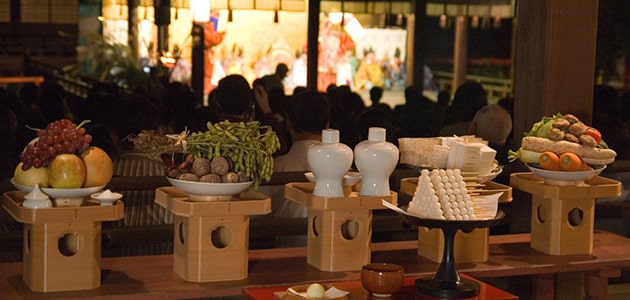
The Meigetsu Kangen-sai (名月管絃祭) is an annual festival in late September that celebrates the harvest moon, a celestial event that has been revered in Japan for thousands of years. Held at Shimogamo Shrine (下鴨神社), the festival is a night of music, dance, and poetry, all designed to honor the moon and the autumn season.
The shrine grounds are illuminated with hundreds of lanterns, creating a dreamlike atmosphere that complements the moon’s natural glow. Traditional instruments like the koto and shamisen are played, their melodies mingling with the autumn breeze. The festival is a reminder of the deep connection between nature and culture in Japan, a relationship that’s celebrated with a sense of reverence and joy.
It’s an experience that transcends mere sightseeing, as it gives us a better understanding of spiritual and aesthetic values that have shaped Japanese culture for centuries.
Information
 Access Access |
11-min walk from Mototanaka Station |
|---|---|
 Official Website Official Website |
https://www.shimogamo-jinja.or.jp/ |
Autumn in Kyoto is a season that defies simple categorization. It’s a blend of natural beauty, cultural richness, and spiritual depth, offering experiences that engage all the senses. Whether you’re a first-time visitor or a seasoned traveler, autumn in this ancient city promises a journey that’s as enriching as it is unforgettable.
Also, check out things to do in Kyoto in other seasons!
▶ Best Things to Do in Kyoto in Spring
▶ Best Things to Do in Kyoto in Summer
▶ Best Things to Do in Kyoto in Winter
▶ When is the Best Time to Visit Kyoto?
▽Subscribe to our free news magazine!▽
For more information about travel and seasonal events in Japan, check these articles below, too!
▽Related Articles▽
▼Editor’s Picks▼
Written by
Photographer, journalist, and avid urban cyclist, making sense of Japan since 2017. I was born in Caracas and lived for 14 years in Barcelona before moving to Tokyo. Currently working towards my goal of visiting every prefecture in Japan, I hope to share with readers the everlasting joy of discovery and the neverending urge to keep exploring.





